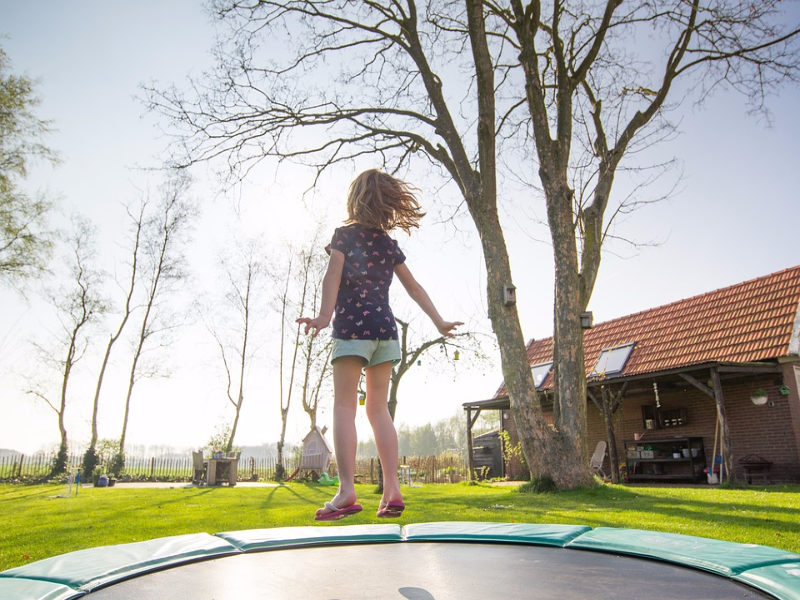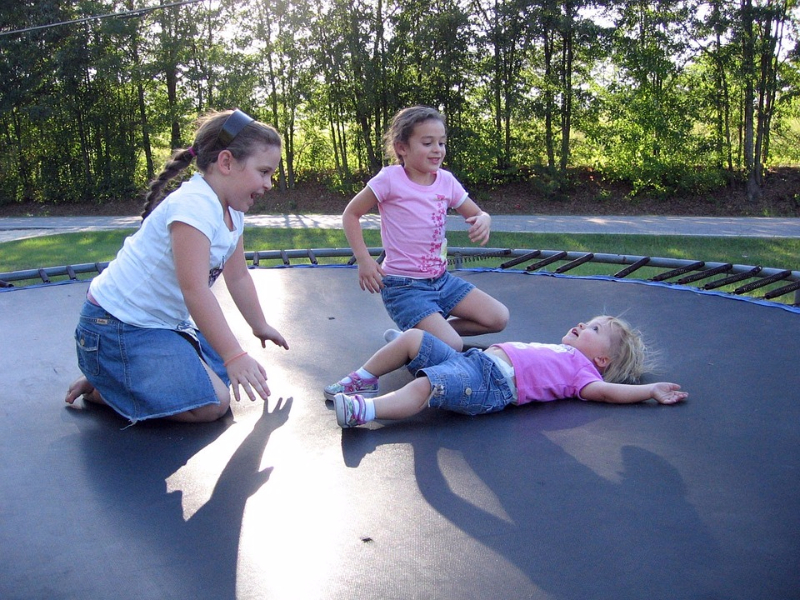Via Everyday Health: 5 Tips for Trampoline Safety
Trampolines can provide hours of outdoor entertainment for kids, but they can also cause hours inside the ER if you’re not careful. Follow these safety tips.
To many parents, a trampoline may seem like an innocent way for kids to have warm-weather fun, but if the right safety tips aren’t followed, your amateur gymnast could bounce right into the hospital.
According to the most recent statistics from the Consumer Product Safety Commission, more than 87,000 kids in the United States visited the hospital in 2009 for a trampoline-related injury. In fact, the American Academy of Orthopaedic Surgeons (AAOS) has warned against the use of trampolines in any home, school, or playground setting.
Most childhood accidents from trampolines occur in the upper extremities, such as the arms and wrists, says Meghan Imrie, MD, a clinical assistant professor of pediatric orthopedics at Lucile Packard Children’s Hospital in Stanford, Calif. “It comes from falling improperly,” Dr. Imrie explains. “When you fall, your first instinct is to put your arms out in front of you, so that’s the area with the highest risk of injury.”
Other injuries can occur, too, such as sprained ankles and leg fractures. Though rare, there have also been reports of spinal cord injuries that resulted in paralysis.Younger children are the most likely to be injured because of their smaller size.
“Kids younger than 6 are lighter, and they’ll be the ones to sort of fly off if the bouncing gets too intense,” Imrie says. “Also, they don’t quite have the coordination and balance to protect themselves. There is a place for trampolines in a kid’s life, but it’s important to take steps to decrease the risk of injury.”
Many childhood accidents from trampolines are due to carelessness, and the majority of them can be prevented with a few precautions. Follow these safety tips the next time your kids want to head to the backyard for some bouncy fun:
Read the manual.
Follow all of the manufacturer’s instructions when assembling and using the trampoline. There may be maximum weight limits, for example, or specific methods for assembling the frame.
Pad it and lower it.
The bars framing the trampoline should be adequately padded to prevent bumped heads, and the surfaces around it should be cushioned in case of accidental falls. Lower the jumping surface closer to ground level, too; a fall from a higher surface means a greater risk of injury.
Keep trampolines off-limits to young children.
The AAOS advises against trampoline use by kids younger than 6. Remove ladders or any other devices that might allow young children to climb up by themselves.
Always supervise trampoline use.
Even older children should be watched while using the trampoline to prevent horseplay. Don’t allow jumpers to perform somersaults and other risky tricks without expert instruction and protective gear like harnesses.
Institute a “one-at-a-time” rule.
For maximum safety, only one child should be allowed on the trampoline at any given time. This keeps kids from being tossed around.“When you’re jumping with someone else, your timing gets thrown off,” Imrie explains. “You get their momentum as well, which can send you up higher in the air.” However, Imrie adds, part of the fun of a trampoline is bouncing with someone else, so if a multiple-bouncer situation is unavoidable, you should at least make sure that the kids are evenly matched in terms of weight and height.
There is no definitive answer on whether trampolines are safe to use, though caution is a must if you greenlight the activity. “It’s a trade-off between having fun and learning balance and coordination,” Imrie says, “and the risks that are inherent to using a trampoline.”








